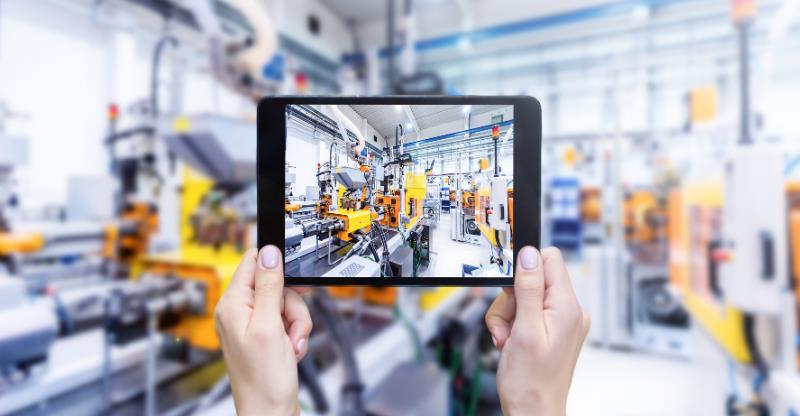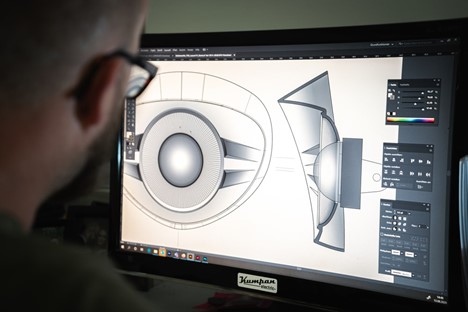Modern Workers Require Modern Training Methods
The manufacturing industry faces a unique challenge as an aging workforce leaves, taking their years of acquired experience with them. The pandemic has amplified the issue and, in some cases, accelerated retirements. The challenge lies in effectively training the next generation of skilled workers to be productive in a landscape that has drastically shifted, and digital work instructions are essential to modernize efforts.
Today’s workforce, often referred to as “digital natives,” grew up immersed in technology from a young age. They have distinct learning preferences that typically favor visual content like images and videos over traditional text-based methods like manuals and long-form lectures, rendering traditional training approaches ineffective.
What Are the Characteristics of Digital Natives?
Digital natives describe a person who grew up surrounded by and using technology from a young age, typically referring to individuals born after 1980, encompassing generations like Millennials, Gen Z, and potentially Alpha.
Digital natives have a lower tolerance for slow-paced, outdated training content methods and, therefore, are difficult to train to an efficient level of productivity. While video can be a useful tool, long-form versions have limitations when searching for specific information.
Here are some key characteristics to consider of digital natives:
- Comfort and familiarity with technology: They are comfortable using and learning new technologies quickly due to their constant exposure throughout their lives.
- Preference for visual learning: They tend to process information more effectively through images, videos, and interactive elements compared to traditional text-based methods.
- Short attention span: Accustomed to the fast-paced digital world, they are likely to have a lower tolerance for slow-paced or repetitive learning methods.
- Strong problem-solving and critical thinking skills: Growing up in a technology-rich environment often fosters these skills as they navigate various digital tools and platforms.
Giving every skilled worker one-on-one training with experienced peers is ideal, but it is only sometimes practical. Finding qualified trainers can be difficult, and pulling them away from their regular duties can disrupt operations and greatly impact productivity and output. For this purpose, it’s time to modernize our training methods to cater to the evolving needs and preferences of the next generation of workers in the manufacturing industry.
 Skilled workers need more immersive training experiences to be successful.
Skilled workers need more immersive training experiences to be successful.
Younger Generations Want and Need Better Training
Traditional training methods can hinder knowledge retention, especially with the growing complexity of manufacturing tasks. For manufacturers to attract and retain younger generations with different learning expectations, the industry needs innovative training strategies.
Continuous workplace evolution necessitates ongoing training, equipping employees with the skills to operate and maintain new technologies both in equipment assembly and repairs. Training needs to include technical “how to” knowledge but also incorporate critical thinking and problem-solving skills they have acquired from having access to endless information online at the tap of a finger.
Language barriers are another hurdle to effective training, as diverse backgrounds can complicate the communication of technical concepts. Addressing this requires tailoring training methods to ensure everyone comprehends and effectively applies the learned information.
Making training mobile empowers workers to access learning materials and instructions anytime, anywhere. The flexibility allows them to learn at their own pace, whether on the factory floor, at home, or during downtime. They can also readily access up-to-date information and procedures, ensuring they have the latest knowledge to perform repairs effectively, regardless of their location. Tying training to PDFs, long-form videos, and other outdated training methods hinders ramp time and productivity of the digital native workforce.
What are Some Considerations in Building Effective Training Programs for Digital Natives?
Training programs must meet learners on their terms. Most digital natives are visual learners that thrive with engaging, dynamic content. Some immediately think of gaming environments and advanced engines offering a promising shift towards more engaging training, but they still have some significant limitations.
Innovative gaming strategies also bring high development costs due to the nature of the building everything. Gamification is traditionally an effective way to train workers, but in manufacturing, the cost to build and manage the level of sophistication needed by manufacturers building and repairing industrial equipment. Designing game-engined-based training programs is complex, often requiring expert skills, substantial time investment, and outsourcing that strains both management resources and company budgets.
The Solution? Unlock Your Existing CAD Assets for Visual Training with Digital Work Instructions.
Manufacturers of industrial equipment can create dynamic and interactive training programs that are much more cost and labor-efficient by utilizing already existing CAD models. Existing CAD assets provide a deeper understanding of mechanical operations and how components interact. Unlocking the assets with the right software can give workers a clear, virtual, and interactive learning experience tailored to each individual’s pace and information needs while empowering trainees to learn effectively and retain knowledge for longer.
Reusing existing CAD assets offers several advantages:
- Faster development: Leverage existing resources, saving time and costs associated with creating new training materials.
- Enhanced precision and accuracy: CAD models ensure consistent and accurate representations of mechanisms, eliminating potential errors.
- Gamification without complexity: Utilize interactive elements, such as manipulating or exploring the model, to engage trainees without the need for expensive, standalone software development.
Taking this approach eliminates the need for physical models or prototypes when utilizing a gaming engine. With CAD-based digital work instructions, trainees can experiment in a virtual environment, fostering deeper comprehension and scenario testing without limitations or risks associated with working on physical equipment or with outdated training methods.
For privacy reasons Vimeo needs your permission to be loaded. For more details, please see our
Privacy Policy.
I Accept
Additionally, reducing the risk of damage to real equipment or safety from a worker becomes another benefit. Trainees can experiment freely in the virtual realm, eliminating the potential for downtime or physical harm to machines or technicians.
By embracing the power of your existing 3D CAD models for training, you can empower your workforce, optimize learning, and minimize risks associated with traditional methods.
Ready to get started with digital work instructions? Get in touch with us!



















